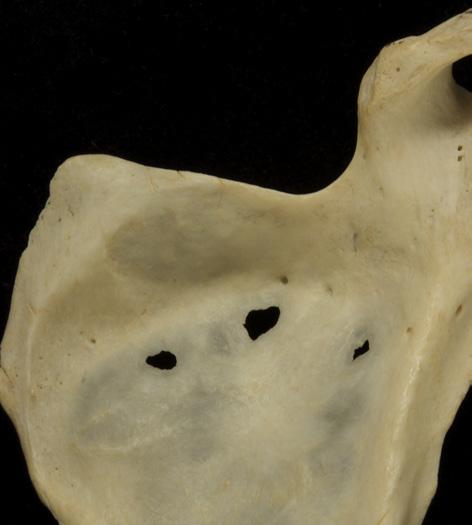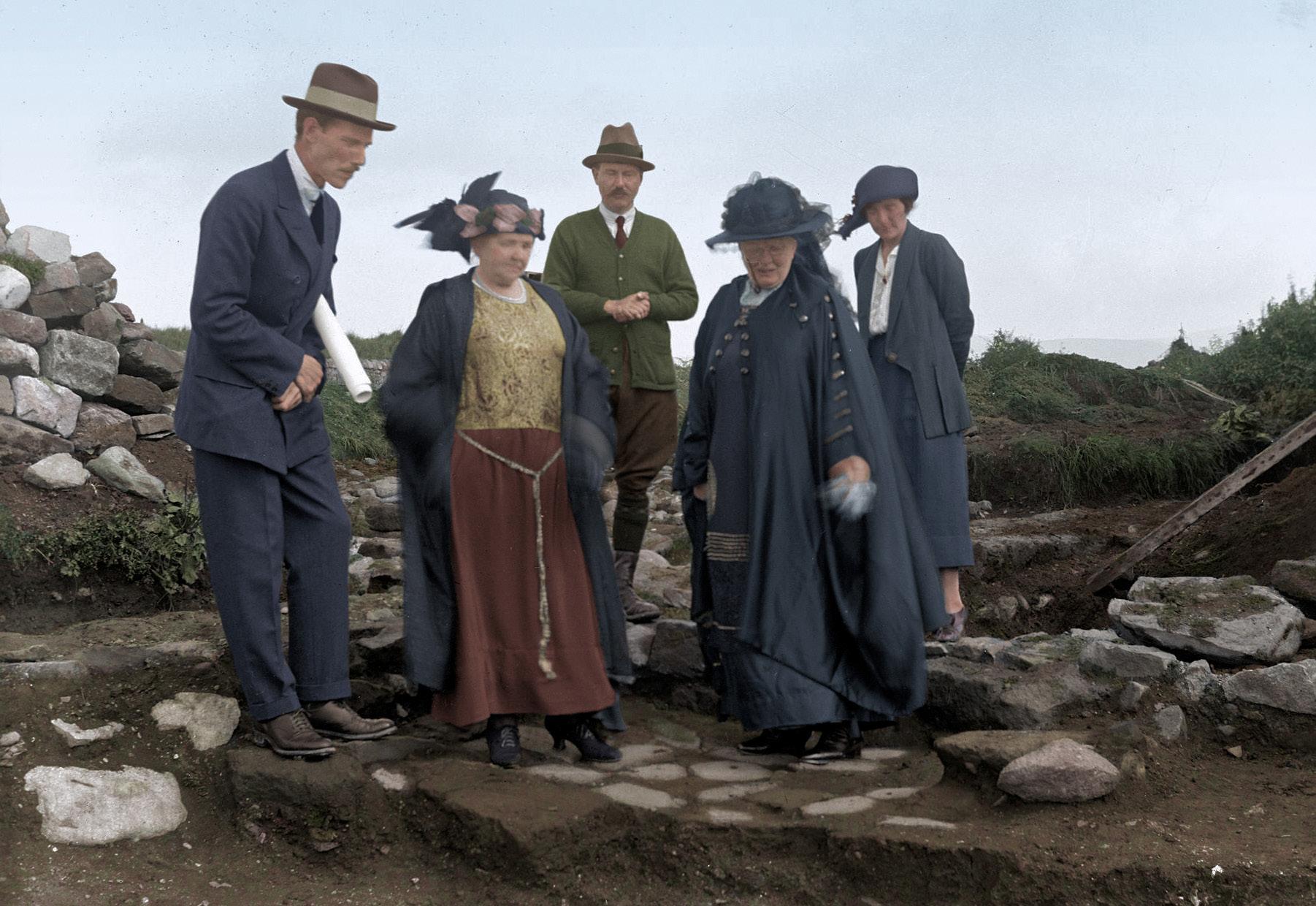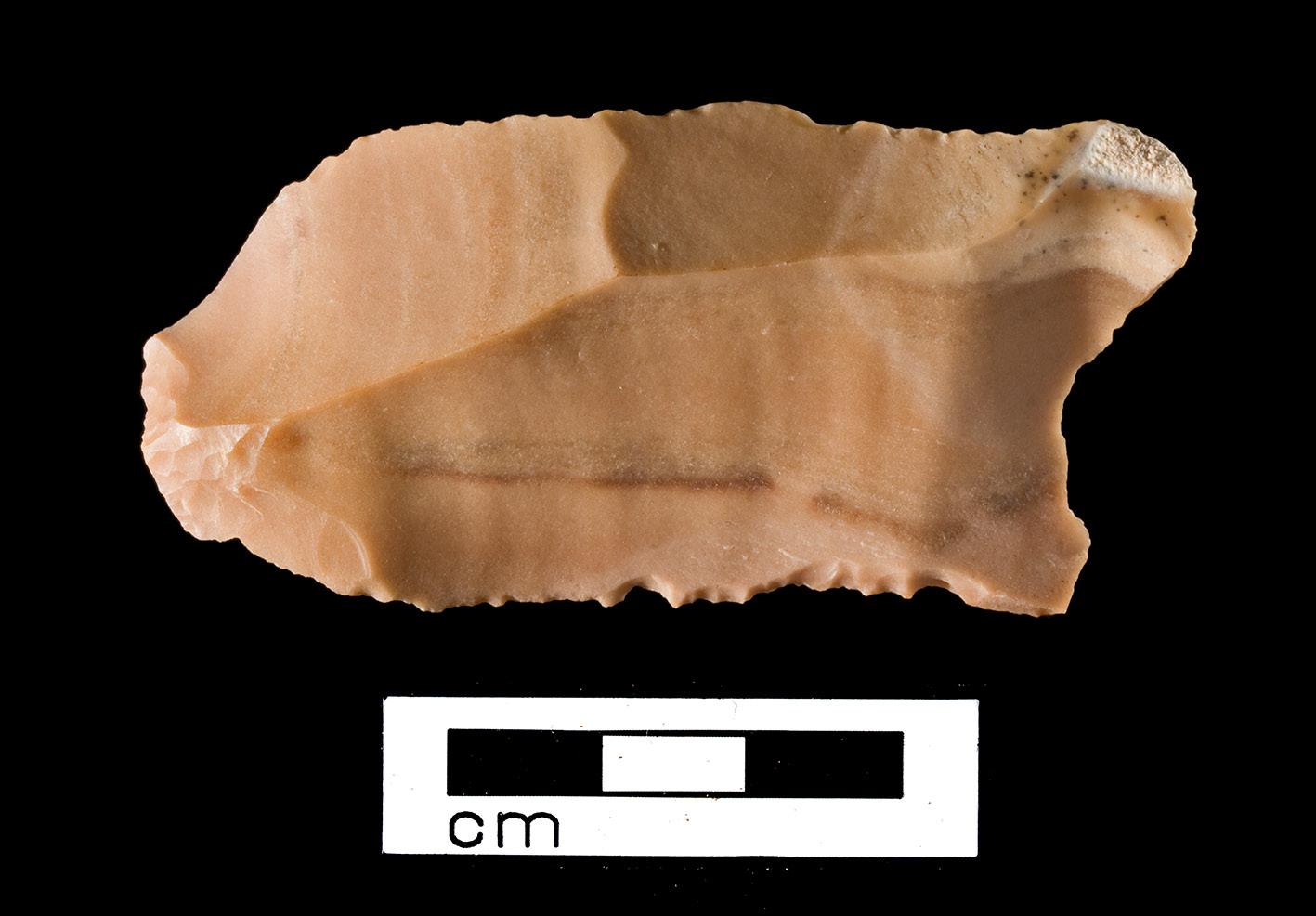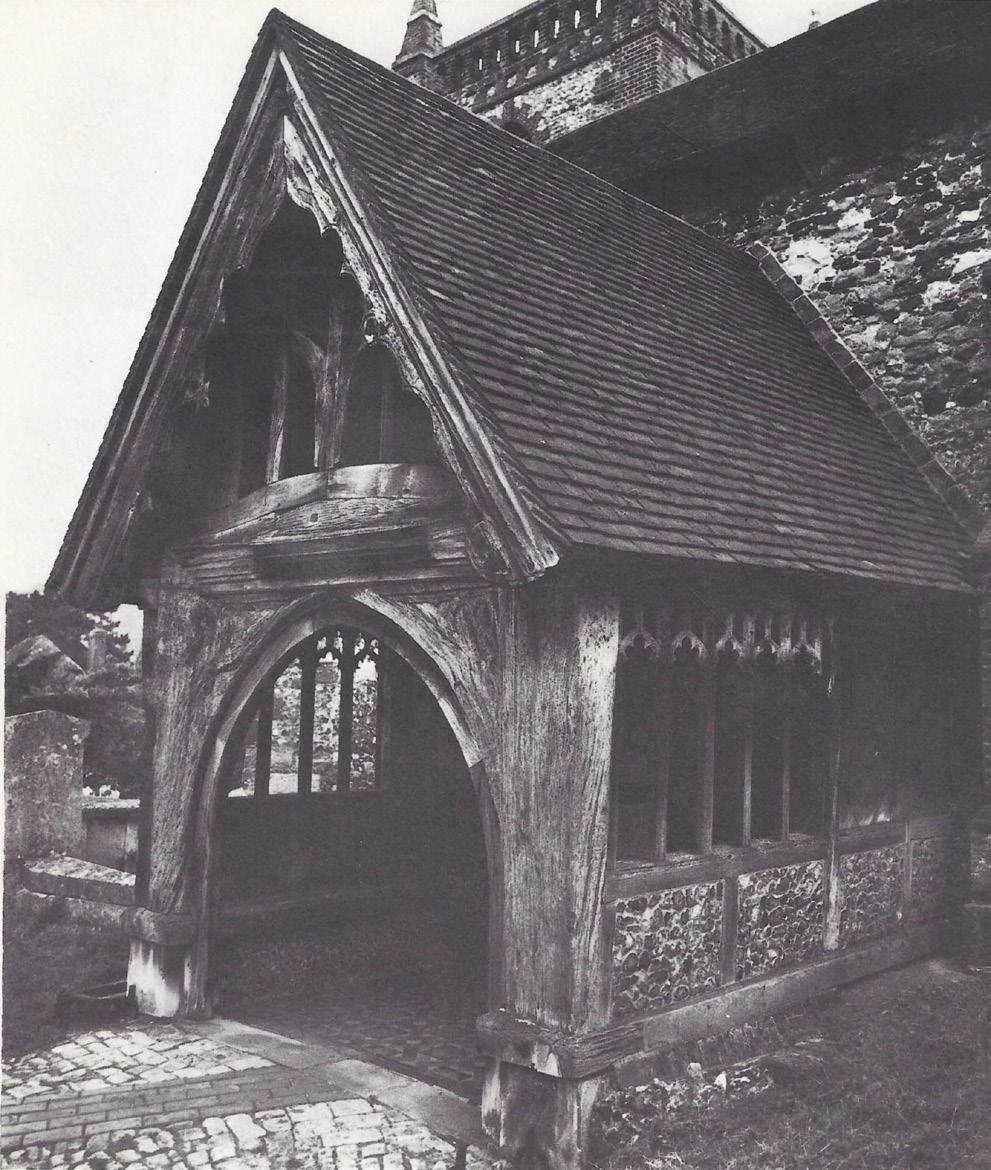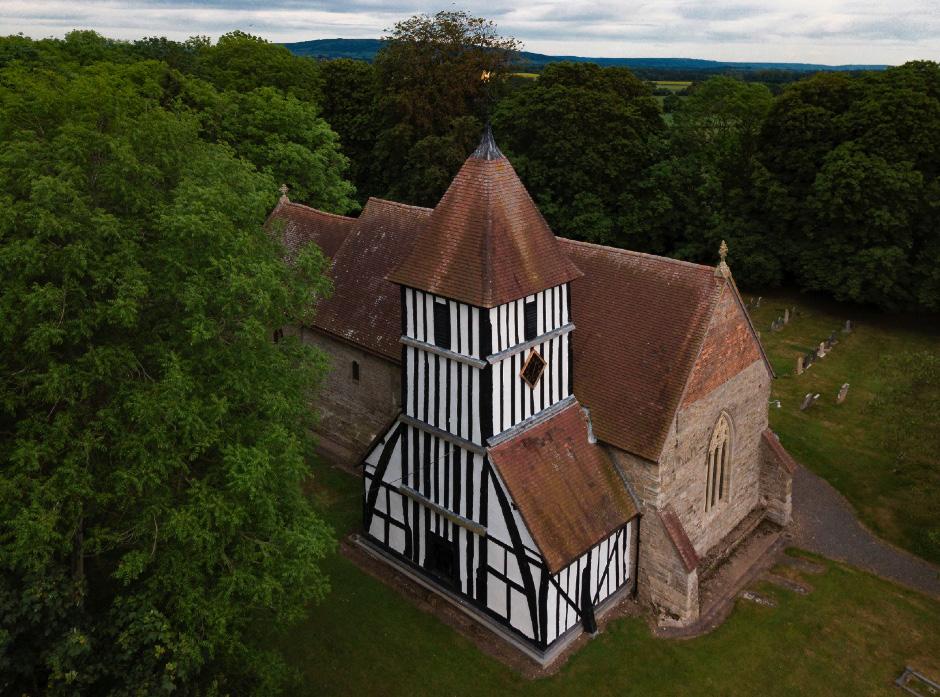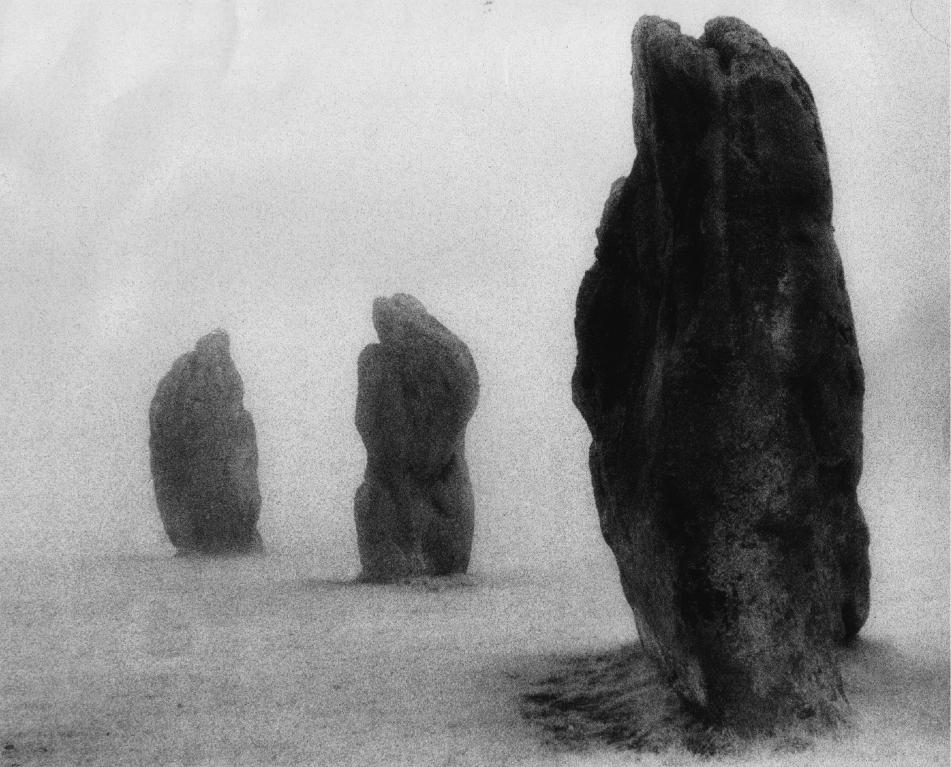
16 minute read
Archaeological
Archaeological and Heritage Photographer Simon Hill FRPS
Simon is a Trustee and President Elect of the Royal Photographic Society and a member of the Archaeology and Heritage Group.
Long before I started at school, I had developed a passion for taking and looking at photographs. This passion for photography stayed with me throughout my school years, flourished at art college and, ultimately, formed the bedrock of my work as a professional photographer. There is a photograph in my parents’ house, of me with a very simple ‘point-and-shoot’ camera, taken in our back garden a few weeks before my fourth birthday. My parents had bought this camera for me so I would stop pestering my dad to allow me to use his treasured Voigtländer Vito CL. In the fifty or so years between my first interest in photography and today, as President Elect of the Royal Photographic Society, taking photographs has always been and remains my passion. I was born and grew up in Shirebrook (in Old English, scirebroc, hence my Twitter and Instagram name, @scirebroc). For centuries it remained a small farming hamlet but, when the twin shafts of the colliery were sunk in 1895-6 by the Shirebrook Coal and Iron Company, it quickly grew into a mining town on what became known as the North Derbyshire Coalfield. Within a year of sinking the shafts, a ‘model village’ of over 400 houses was being built to house the miners and their families. The colliery was one of the most productive in the coalfield but its demise began with the 1984-5 Miners’ Strike and, in May 1993 - only two years before its centenary - the colliery closed as one of the casualties of the 1992-94 Coal Crisis.
To the rear of my childhood home, in clear sight of the colliery on higher ground to the south-east, there were cattle fields surrounded by thick hedges out of which grew some fairly substantial trees -
Front cover: Coppergate Helmet
An eighth-century Anglo-Saxon helmet found in York. It was discovered in May 1982 at the bottom of a pit that is thought to have once been a well. The helmet is one of six Anglo-Saxon helmets known to have survived to the present day, and is by far the best preserved. Photographed for the Yorkshire Museum.
great for climbing and falling out of! At the bottom of one of these fields there was a gap in the hedge, plenty wide enough for a small child to crawl through and find, on the other side, a ‘wasteland’ completely overgrown with brambles and nettles. It was in this wasteland that my interest was sparked in all things archaeological and historical. Below the topsoil, at a depth much less than the height of a small child’s Wellington boot, the earth turned black and crumbly. Using small spades intended more for the building of sand castles at the beach, my friends and I would organise ourselves into teams and dig through the black earth often to a depth greater than our height, angling the sides of the trenches to reduce the chance of collapse. Laid down when Charlotte Brontë was publishing Jane Eyre, the Potato Famine was ravaging Ireland, Tennyson was replacing Wordsworth as Poet Laureate, and long before the sinking of the colliery, this unassuming patch of long-abandoned land had for many decades been a rubbish dump but was now our very own archaeological excavation - although, at that time, I don’t think any of us had ever heard the word ‘archaeology’ let alone imagined ourselves to be ‘archaeologists’! Mixed in with the deep and heavily compressed layers of century-old coal fire ash was all manner of Victorian rubbish … broken bottles, pottery fragments, remnants of clay pipes, beef ribs, pigs’ jaw bones and, occasionally, old tins and bits of rusty ironwork. Thus, my twin interests of photography and archaeology started a mere stone’s throw from each other: with my first camera in my parents’ back garden and with a plastic spade at the bottom of the field behind our house. It would be another twenty years before these two interests would again come together. Sometime during 1982, while doing my A Levels at the local comprehensive school, I remember having a fairly heated ‘discussion’ with my careers tutor when I tried to explain that I didn’t want to go to university but would rather go to art college
Domesday Book (detail). Drawn up on the orders of King William I, Domesday Book is a nationwide survey of the landholdings and resources of late 11th century England. Its 913 pages and two million Latin words describe more than 13,000 places in England and parts of Wales. The native English gave it the nickname ‘Domesday’ after God’s final Day of Judgement when every soul would be assessed and against which there could be no appeal. Its official custodians, now The National Archives, have used this title since the 1170s.
and become a photographer! Later that year, I submitted a portfolio of ten photographs to the Royal Photographic Society (RPS) and took the same portfolio to an interview at art college. That panel of ten 12”x16” black and white photographs, printed in my parents’ blacked-out bathroom using a Paterson “Darkroom in a Box” and spray-glued on to 20”x16” cardboard mounts, gained for me a Licentiateship of the RPS and an unconditional offer to study Professional Photography at art college. In September 1983, while the colliery broke record after record for production - achieving output of over one million tons on seventeen different occasions - I started as a ‘fresher’ at Blackpool College of Art, studying under the triumvirate of Roger Goodwill, Gordon Reid and Geoff Clark. I left college a year early, in 1985, foregoing my final year and the Professional Qualifying Exam to undertake a photo-documentary project in the Outer Hebrides. I graduated with two diplomas, one in Professional Photography and one in Design; I was also honoured to receive the British Institute of Professional Photography ‘Student of the Year’ Award and, most importantly, I gained my ARPS on the way! Sadly, in the time it took me to gain my diplomas, the Miners’ Strike had set Shirebrook Colliery on an irreversible course to closure. After finishing my documentary project in the Outer Hebrides, I worked for a couple of years as an advertising photographer - this was a huge mistake! I have no idea, to this day, why I decided to venture into the world of advertising. I can say with all honesty, that the world of advertising made very little impression on me and I made very little impression on the world of advertising! A few months after a calamitous photoshoot in which I inadvertently ‘killed’ the Easter Bunny (that is another story for another day!) I joined the York Archaeological Trust (YAT) as its Head of Photography.
For ten years, between 1987 and 1997, I led a group of up to five photographers and various administrative staff recording the archaeology and architecture of the city of York. In addition to the daily routine of archaeological record photography in the muddy waterlogged trenches that is so typical of riverside excavation in York, I introduced new aspects to the work of the department.


Formerly known as the Public Record Office, this is the official archive of the UK government and for England and Wales. It is guardian of some of the nation’s most iconic documents, dating back more than 1,000 years. I was commissioned to photograph over 300 of these artefacts which included Domesday Book and Magna Carta, during thi the VIDAR media project to design and build the PRO Education Centre in 2000. See pages 8-9.
Top Row (left to right) Jack the Ripper, 1888 A postcard, claiming to have been written by ‘Jack the Ripper’ sent to the Central News Agency before being forwarded to Scotland Yard. Waterloo Medal, 1815 Awarded to Driver William Gallas of the King’s German Artillery and enclosed with his discharge papers. The medal and papers were never claimed by Gallas or his family. Abdication of Edward VIII, 1936 Edward is the only British monarch to have abdicated voluntarily. The ‘Instrument of Abdication’ is signed and dated 10 December 1936. Anglo-Spanish Treaty, 1605 This treaty, seventeen years after the launching of the Armada in 1588, brought to an end almost two decades of warfare between Spain and England. Tudor Wallpaper, 16th century One of several samples of block printed wallpaper which had been used to line deed boxes belonging to the Court of Wards and Liveries.

Middle Row (left to right) Magna Carta, 1225 The document shown here is the third version issued in 1225 by King John’s son, Henry III. This is the final, definitive form which entered the statute books as the first and most fundamental assertion of English rights. Gold seal of Henry VIII, 1527 This is a reproduction of the gold seal in the Archives Nationales in Paris that King Henry VIII of England attached to his ratification of the treaty of perpetual peace with King Francis I of France. Death Mask of Dr John Yonge, 1516 This is a copy of the death mask of Dr John Yonge, Master of the Rolls, who died in 1516. Other versions of Yonge’s death mask are in Westminster Abbey and the National Portrait Gallery. Gold coins, 1780 These coins could be described as pirate’s booty. They were found in the Admiralty Prize Court Miscellany. The official description of the document ‘Intercepted mails and papers Dutch 1780-7’ gives little idea of the unexpected treasure inside. No 106 Squadron, WW2 An album of operational photographs from No 106 Squadron. The ‘106’ was involved with many daring missions during WW2 including low-level dusk raids on industrial sites in central France.
Bottom Row (left to right) Birth certificates, 1819 Parish registers are now mostly held in county record offices. Thousands of registers once held by chapels of religious dissenters such as Baptists, Presbyterians and Methodists are now in The National Archives.
Instrument of Surrender, 1982 The Falklands Conflict began with the invasion and occupation of the islands by Argentine forces on 2 April 1982. During the ensuing conflict over 1,000 British and Argentine service personnel and civilians lost their lives. The Argentine forces surrendered on 14 June 1982.
Great Seal of Elizabeth I, 1586 This is the second Great Seal of Elizabeth I which she used from 1586 until her death in 1603. The Great Seal was the most important of all seals as it was used by the monarch to sanction public acts and edicts.
Suppression of the slave trade, 1847 Britain abolished the slave trade in 1807 and turned its efforts to suppressing the slaving activities of other countries, often through trade agreements. This document is a trade agreement with the Chiefs of the Garraway River in West Africa.
Cromwell’s Cabinet. This beautiful cabinet, given to Oliver Cromwell as a diplomatic gift by the Grand Duke of Tuscany in 1656, shows the status to which Cromwell had risen as Lord Protector. This is one of several hundred artefacts that Simon Hill photographed during his project to design and build the new Cromwell Museum in Huntingdon, in 2020. Photographed for the Cromwell Museum, Huntingdon.

Viking age coins, coin die and lead trial piece from the excavation at Coppergate, York. York’s mint, the only one in the region, confirmed the economic importance of the city. Before the Viking invasion, Northumbria’s coins were somewhat shoddy but from about 900 the Vikings were producing silver currency of a quality equal to the rest of England. Photographed for York Archaeological Trust / Council for British Archaeology.
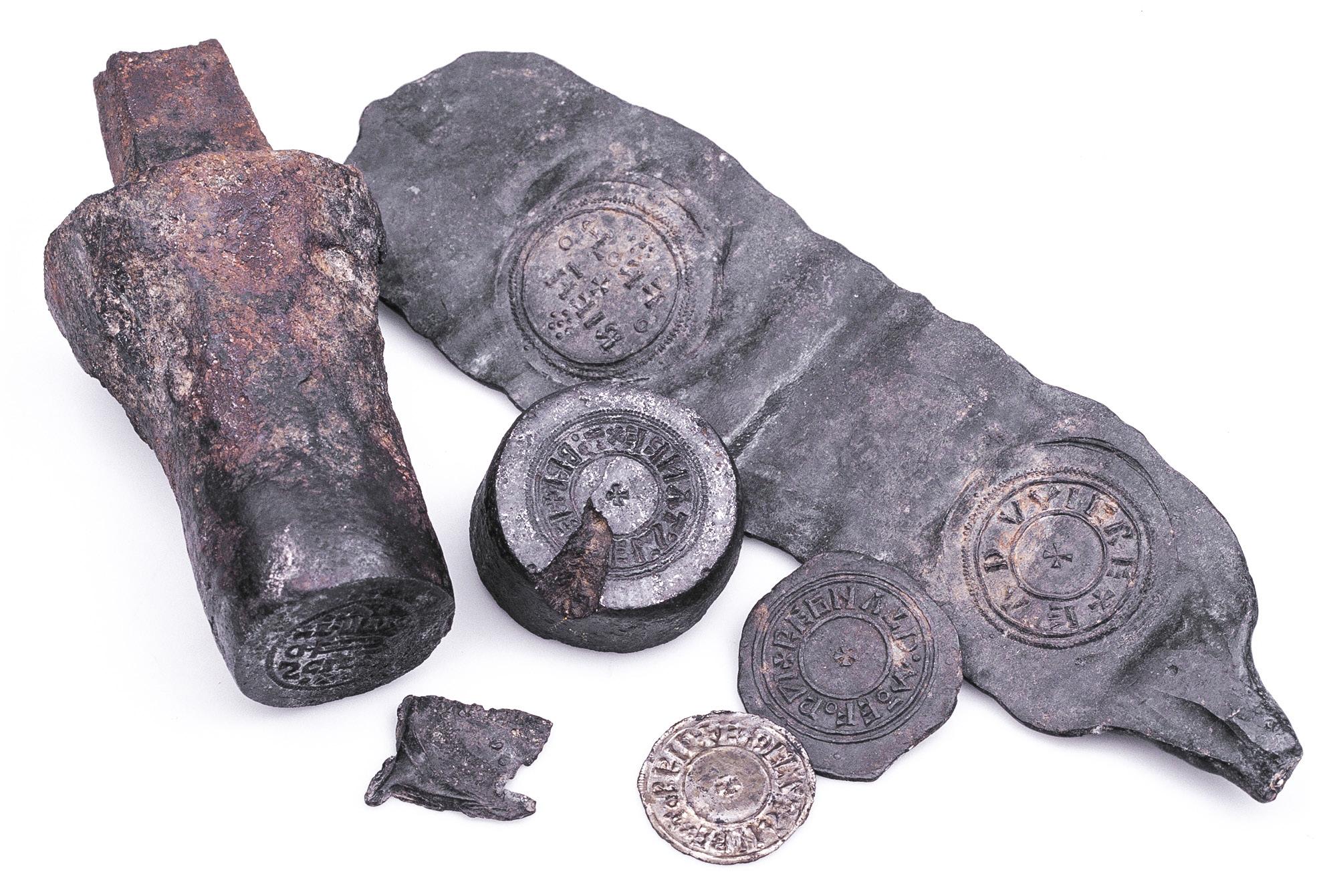
Stonehenge, Wiltshire. One of the most famous landmarks in Britain, the prehistoric monument of Stonehenge in is regarded as a cultural icon. Archaeologists believe it was constructed between 3000BC and 2000BC although the circular earth bank and ditch have been dated to about 3100BC. The site is owned by the Crown and managed by English Heritage.

We ran an insanely busy picture library, produced video sequences for distribution to UK and European television broadcasters, put together multi-screen audio-visual shows (using a bank of twelve Kodak Carousel projectors onto three screens), and worked on the creation of encyclopaedic collections of images using Laserdisc (a very short-lived technology), PhotoCD (which didn’t last must longer than Laserdisc) and CD-ROM. Around the same time, we began the transition from film photography to digital photography although I tried (somewhat in vain) to slow down our pace of adoption because of the relatively low picture quality of early digital cameras when compared to medium format film. The YAT was a wonderful place to work; an incredible and collaborative team working tirelessly to excavate, record and interpret the Anglo-Saxon, Roman, Viking and Medieval archaeology of the city ahead of relentless development. The Director and Deputy Director - Dr Peter Addyman and Dr Richard Hall - taught me so much about managing a team of creative and enthusiastic professionals, giving each member of the team the room, resource and encouragement to develop their own exciting initiatives but with an oversight that ensured the viability, sustainability and strategic direction of the organisation as a whole. It was during my time with the YAT that I gained my Fellowship of the RPS. In 1991, nine years after gaining my Licentiateship, and with a panel of twenty photographs that I had taken for several volumes of the academic publication The Archaeology of York, I was finally able to put the letters FRPS after my name. My panel was featured in the Photographic Journal with one of my photographs making it on to the front cover. This was also the year that I had my first photographs published in National Geographic Magazine - an ambition I had held since my schooldays.
Stonehenge, Wiltshire. One of the most famous landmarks in Britain, the prehistoric monument of Stonehenge in is regarded as a cultural icon. Archaeologists believe it was constructed between 3000BC and 2000BC although the circular earth bank and ditch have been dated to

I have never been accused of “taking it easy” - more often accused of “burning my candle at both ends and in the middle” - and during my time at the YAT, I studied for a Master’s degree at St Martin’s School of Art and began teaching on undergraduate and post graduate courses in photography and film. At the same time I managed to secure some really challenging freelance photography commissions. These commissions included The British Academy’s Corpus of Anglo-Saxon Stone Sculpture, Volume IV, South-East England, recording and publishing, in a consistent format, all known surviving fragments of the earliest English sculpture dating from the 7th to the 11th centuries.
In addition to this substantial project, I also worked on commissions from English Heritage, the National Trust and the Ordnance Survey. Earlier, through the YAT, I had produced the cover photographs for two publications in the Ordnance Survey Historic Map and Guide series. Not wanting to restrict myself to projects in the UK, I began to look further afield for projects. In 1993, I was appointed photographer and codirector to a Council of Europe project called The Viking Routes and two years later as photographer and co-director of an Oxford University multimedia project, The Roman Empire. Both of these projects involved extended travel across Europe photographing some of the most important Viking and Roman sites and artefacts. In 1996, I continued my work with Oxford University when I was contracted as the photographer for the excavation of the Hôi An wreck site in the South China Sea. This project was led by Mensun Bound of Oxford University’s Marine Archaeological Research Establishment (MARE). The project took four years and cost an estimated US$14 million, recovering over 250,000 intact examples of ceramics. The project was covered in numerous magazines around the world.
Spence Collection. The decorations - Companion’s neck badge of the Order of the Bath (left), Distinguished Service Order (second left) and Territorial Decoration (far right) - and medals of Colonel Gilbert Ormorod Spence CB DSO TD. An accomplished artist, Gilbert Spence (1879-1925) commanded 5th Battalion Durham Light Industry during the First World War and, on his death in 1925, bequeathed a superb collection of militaria, including his medals, to Preston Park Museum. Photographed for Tees Valley Museums / Arts Council England.

My work with the YAT and my independent freelance commissions brought me into contact with many museums and galleries, first as a photographer but this soon expanded into work as an exhibition designer … that second diploma was going to come in useful after all. When the YAT decided to completely renew its JORVIK Viking Centre visitor attraction in the heart of York, I had an idea … I offered to buy the ‘old’ JORVIK for

Ripon Jewel. The original church on the site of Ripon Cathedral was founded by St Wilfrid (c.634-709) in 672. Found close to the Cathedral in 1976, the ‘jewel’ is a small gold roundel 29mm in diameter. This type of inlaid jewellery was fashionable during Saxon times and would have been worn by kings, nobles and important churchmen. Photographed for the Dean and Chapter of Ripon Cathedral.
£1 and in so doing provide the YAT with a means to avoid the considerable cost of dismantling and disposing of the ‘old’ JORVIK. With a group of friends, we completely dismantled the ‘old’ JORVIK, built a temporary version in a redundant church and, when the ‘new’ JORVIK opened, we dismantled it again, shipped it to Iceland on a three-year rental agreement before touring it across Europe. The profits from this deal allowed me to set up JANVS Design and VIDAR Media - specialist design and media companies working with museums, galleries and cultural attractions across the UK, Europe and Scandinavia. Almost thirty years later, I now divide my time between my work as a professional editorial photographer, and my ‘other job’ as Group Managing Director of VIDAR Media Group (following the merger of my original companies). The group has won many awards for its design-andbuild work including Museum of the Year, European Attraction of the Year and Global Attraction of the Year. We have even won bronze and silver-gilt medals for designs at the Chelsea Flower Show! Who would have thought that the four year old boy photographed with a simple camera in his parent’s garden would, fifty years later, become President Elect of the Royal Photographic Society? What a wonderful journey it has been and what a wonderful journey it continues to be as a Fellow, Trustee and President Elect of the Royal Photographic Society. https://www.simonhillphotos.com/

